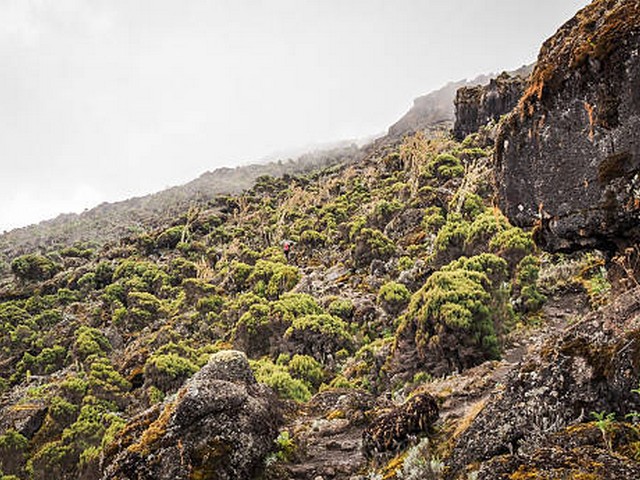Common Injuries on Kilimanjaro and How to Avoid Them
Ascending the majestic slopes of Mount Kilimanjaro is a dream for many adventurers worldwide. Standing as the tallest peak in Africa, this grand mountain invites thousands of climbers every year who are eager to conquer its summit and stand atop the "Roof of Africa." However, the climb is not without its challenges, and being prepared is key to a successful and enjoyable ascent. At the Kilimanjaro Centre for Trekking and Ecotourism (KCTE), we prioritize your safety and well-being, ensuring that the breathtaking views and personal triumphs are not overshadowed by preventable injuries. Today, let’s explore the most common injuries on Kilimanjaro and provide expert advice on how to avoid them.
Understanding the Risks
Before we embark on our journey through preventative measures, it is essential to understand what makes Kilimanjaro both a unique and challenging endeavor:
- Altitude: Rising approximately 5,895 meters (19,341 feet) above sea level, Kilimanjaro offers a high-altitude environment that can pose serious health risks.
- Climate Variability: From tropical rainforests to arctic conditions, the climate changes drastically as you ascend.
- Physical Demand: Climbing Kilimanjaro requires physical stamina and mental fortitude, as the trek involves long days of walking on varied terrain.
How to Prevent Common Injuries
Altitude Sickness
Symptoms and Dangers:
Altitude sickness, or acute mountain sickness (AMS), is perhaps the most common issue climbers face. Symptoms include headache, nausea, dizziness, and fatigue. If left untreated, it can progress to more severe conditions such as High Altitude Pulmonary Edema (HAPE) or High Altitude Cerebral Edema (HACE).
Prevention Tips:
- Acclimatization: Spend a few days at a moderate elevation to get your body used to decreased oxygen levels.
- Hydration: Drink plenty of water throughout your climb.
- Pace Yourself: Opt for a slower ascent to give your body more time to adjust. KCTE offers tailored climbing schedules that emphasize gradual ascent.
Musculoskeletal Injuries
Symptoms and Dangers:
Sprains, strains, and fractures can occur from slipping, tripping, or overexertion. The knees and ankles are particularly vulnerable.
Prevention Tips:
- Proper Footwear: Invest in high-quality, well-fitting hiking boots with good ankle support and grip.
- Training: Prepare your body months in advance with exercises that strengthen your legs, core, and endurance.
- Use Trekking Poles: These can reduce the impact on your joints and improve balance.
Skin Conditions
Symptoms and Dangers:
Sunburn and frostbite are common skin issues on Kilimanjaro. The former can occur even through cloud cover, while the latter is a risk at the summit where temperatures can plummet.
Prevention Tips:
- Sun Protection: Wear a broad-spectrum sunscreen, UV-protective sunglasses, and a wide-brimmed hat.
- Appropriate Clothing: Dress in layers that can be easily adjusted and ensure you have warm, water-resistant outer layers for higher altitudes.
Digestive Disturbances
Symptoms and Dangers:
Traveler’s diarrhea and dehydration can affect climbers due to changes in diet and water sources.
Prevention Tips:
- Water Treatment: Always drink treated or bottled water. KCTE ensures a supply of purified water for all climbers.
- Eat Wisely: Stick to cooked meals and avoid raw vegetables and fruits unless they can be peeled.
Tailoring Your Climb with KCTE
At Kilimanjaro Centre for Trekking and Ecotourism, we understand that each climber has unique needs and preferences. That’s why we offer customized climbing packages that include:
- Experienced Guides: Our guides are trained to recognize and respond to altitude sickness and other health concerns.
- Flexible Schedules: We design itineraries that allow for proper acclimatization, increasing your chances of a successful and healthy summit.
- Safety Protocols: We adhere to strict safety standards, including regular health checks during the climb.
FAQs About Climbing Kilimanjaro
Q: What is the best time of year to climb Kilimanjaro?
A: The best times to climb Kilimanjaro are during the dry seasons, from late June to October and from late December to mid-March.
Q: How fit do I need to be to climb Kilimanjaro?
A: Climbing Kilimanjaro is strenuous but achievable with the right preparation. It is recommended to engage in regular cardiovascular and strength training exercises several months before your climb.
Q: Can altitude sickness be treated on the mountain?
A: Yes, mild cases of altitude sickness can be treated with proper rest, hydration, and medications if necessary. Our guides are equipped to assist in these situations and will monitor climbers for any signs of severe altitude-related illnesses.
Conclusion: Ready to Conquer Kilimanjaro?
Embarking on a climb up Mount Kilimanjaro is an exhilarating adventure that requires preparation and respect for the mountain’s challenges. By understanding and preparing for the common injuries associated with high-altitude trekking, you can greatly enhance your climbing experience. Remember, the journey to the summit is not just about reaching the top; it’s about enjoying every step of the way safely and healthily.
Are you ready to take on the challenge? Book your Kilimanjaro climbing adventure with Kilimanjaro Centre for Trekking and Ecotourism (KCTE) today, and take the first step towards an unforgettable journey on one of the world’s most iconic mountains. Let us help you reach new heights, safely and joyfully!




